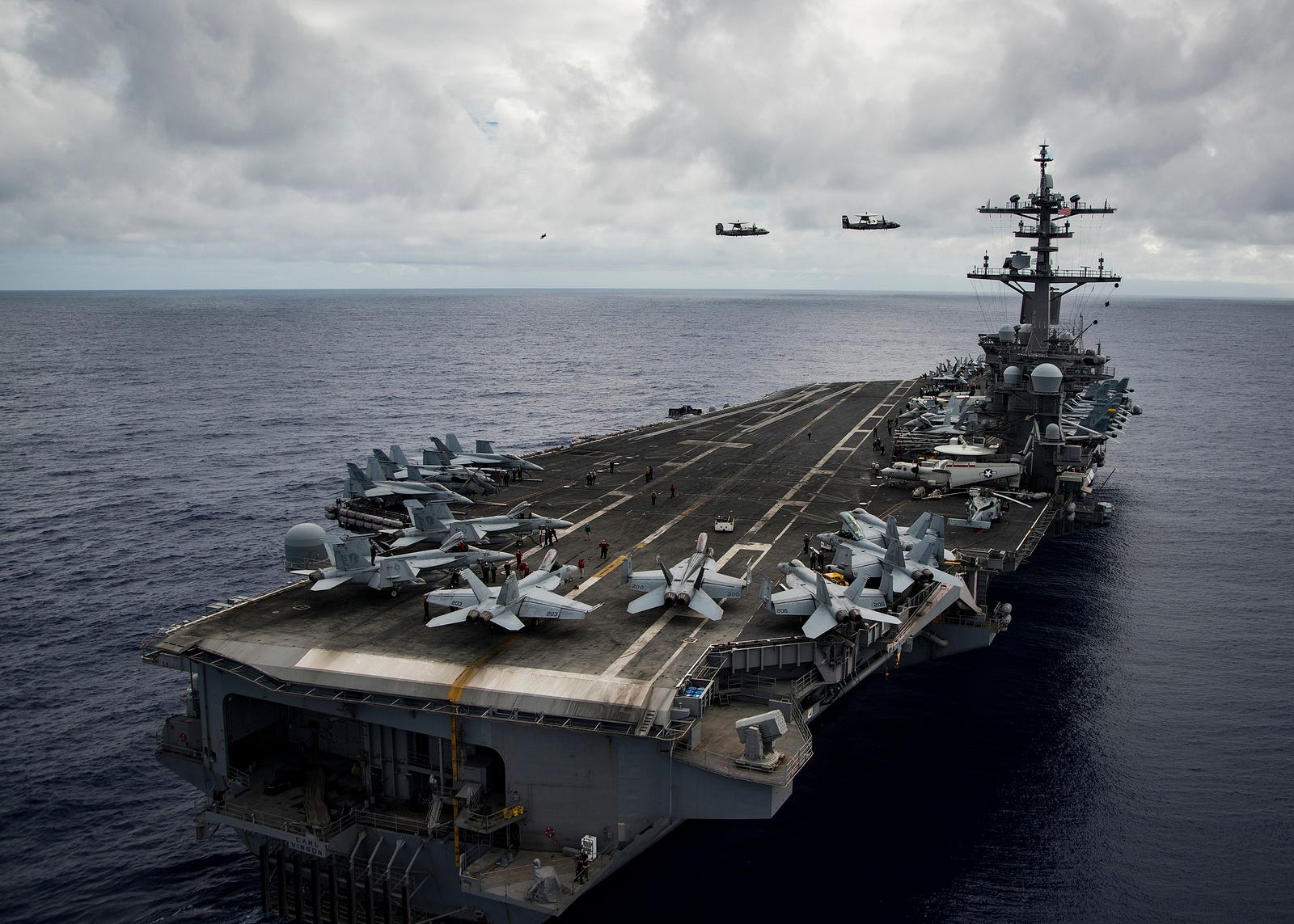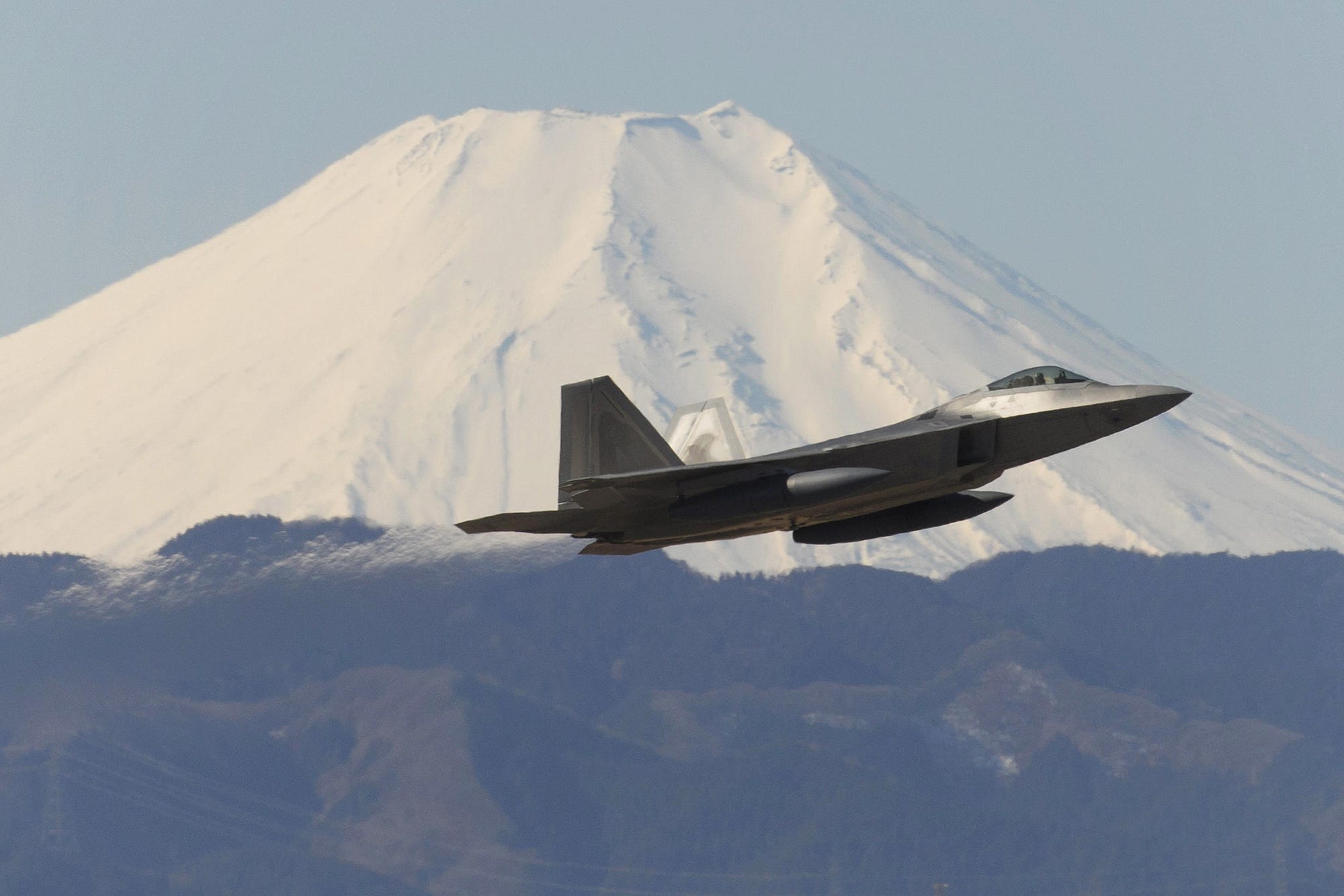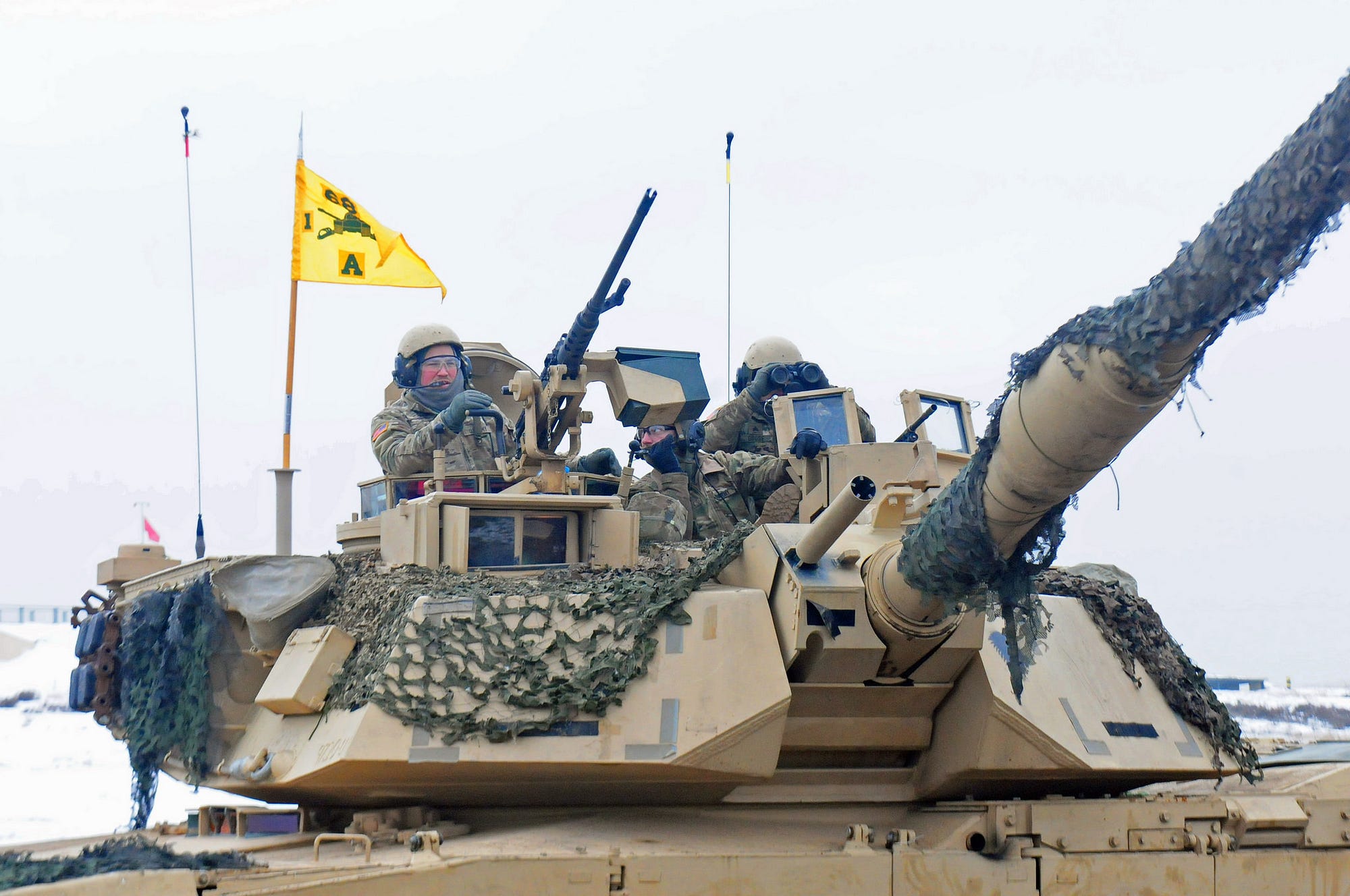China first, Russia second
by Michael Klare
If there’s a single consistent aspect to Pres. Donald Trump’s strategic vision, it’s that the simple principle of “America First” should always govern U.S. foreign policy, with this country’s vital interests placed above those of all others.
“We will always put America’s interests first,” he declared in his victory speech in the early hours of Nov. 9, 2016. “From this day forward, it’s going to be only America first, America first,” he insistedin his inaugural address on Jan. 20, 2017.
Since then, however, everything he’s done in the international arena has, intentionally or not, placed America’s interests behind those of its arch-rivals, China and Russia. So to be accurate, his guiding policy formula should really be relabeled America Third.
Given 19 months of bravado public rhetoric, there was no way to imagine a Trumpian presidency that would favor America’s leading competitors. Throughout the campaign, he castigatedChina for its “predatory” trade practices, insisting that it had exploited weak enforcement policies to eviscerate the U.S. economy and kill millions of jobs.
“The money they’ve drained out of the United States has rebuilt China,” Trump told reporters from The New York Times in no uncertain terms in March 2016.
And while he expressed admiration for the strong leadership of Russian Pres. Vladimir Putin, he decried that country’s buildup of advanced nuclear weapons.
“They have gone wild with their nuclear program,” Trump stated during the second presidential debate. “Not good!”

Above and at top — U.S. Navy photos
Judging by such comments, you might imagine that Donald Trump would have entered the Oval Office with a strategic blueprint for curbing the geopolitical sway of America’s two principal potential great power rivals. Presumably, this would have entailed a radical transformation of the strategy Pres. Barack Obama devised for this purpose — a two-pronged effort that involved the reinforcement of NATO forces in Eastern Europe and the “rebalancing” of U.S. military assets to the Asia-Pacific region.
Obama’s strategy also envisioned the use of economic pacts — the Transatlantic Trade and Investment Partnership and the Trans-Pacific Partnership, or TPP — to buttress those military measures. But Trump had made known his disdain for NATO and the TPP, so it was reasonable to assume that he would arrive in Washington with an alternative plan to ensure America’s primacy on the global strategic chessboard.
As President Trump has made clear, however, his primary strategic priorities do not include the advancement of America’s status in the race for global strategic preeminence. Instead, as indicated by the outline of his “America First Foreign Policy” posted on the White House website, his top objectives are the extermination of what he calls “radical Islamic terrorism” and the enhancement of America’s overseas trade balance.
Just how vital these objectives may be in the larger scheme of things has been the subject of considerable debate. But few have noted that Trump has completely abandoned any notion that the United States is engaged in a global struggle for power and wealth with two potentially fierce competitors, each possessing its own plan for achieving “greatness.”
And it’s not just that Trump seems to have abandoned the larger geopolitical playing field to America’s principal rivals. He appears to be doing everything in his power to facilitate their advance at the expense of the United States.
In just the first few weeks of his presidency, he has already taken numerous steps that have put the wind in both China’s and Russia’s sails, while leaving the United States adrift.

U.S. Navy photo
Trump’s China-first foreign policy
In his approach to China, Trump has been almost exclusively focused on the issue of trade, claiming that his primary goal is to combat the unfair practices that allowed the Chinese to get rich at America’s expense. It’s hardly surprising, then, that his nominee as U.S. trade representative, Robert Lighthizer, is an outspoken critic of that country’s trade behavior.
“It seems clear that the U.S. manufacturing crisis is related to our trade with China,” he told Congress in 2010.
But while trade may be an important part of the U.S.-China relationship, Trump’s single-minded fixation on the issue leaves aside far more crucial political, economic, diplomatic and military aspects of the Sino-American competition for world power and influence. By largely ignoring them, in just weeks in the Oval Office, he has already enabled China to gain ground on many fronts.
This was evident in January 2017 at the World Economic Forum in Davos, Switzerland. No senior representative of the soon-to-be installed Trump administration even put in an appearance.
China was represented by no less than Pres. Xi Jinping himself, a first appearance for a Chinese head of state. In a major address, denouncing those who seek to turn away from globalization — he didn’t mention any names — Xi portrayed China as the world’s new exemplar of free trade and internationalism.
“Say no to protectionism,” he insisted. “It is like locking yourself in a dark room. Wind and rain are kept out, but so are light and air.”
For many of the 1,250 CEOs, celebrities and government officials in the audience, his appearance and remarks represented an almost mind-boggling shift in the global balance of political influence, as Washington ceded the pivotal position it had long occupied on the world stage.
Later in January 2017, on his first weekday in office, Trump appeared to confirm the Chinese leader’s derisory comments by announcing his intent to withdraw from negotiations for the Trans-Pacific Partnership, thereby abandoning U.S. leadership in efforts to vastly augment trade in the Asia-Pacific region. From Trump’s perspective, the 12-nation trade deal — which included Australia, Malaysia, Japan and Vietnam, while carefully excluding China — would harm American workers and manufacturers by facilitating exports to this country by the other participants, a view some on the left shared with him.
At the same time, however, many in Washington saw it as bolstering American efforts to limit Beijing’s influence by increasing trade among the prospective TPP member states at China’s expense. Now, China has an unparalleled opportunity to reorganize and potentially reorient trade in the Asian region in its direction.
“There’s no doubt that this action will be seen as a huge, huge win for China,” Michael Froman, the trade representative who negotiated the TPP under Obama, said. “For the Trump administration, after all this talk about being tough on China, for their first action to basically hand the keys to China and say we’re withdrawing from our leadership position in this region is geo-strategically damaging.”
Among other things, many expect China to encourage Asian countries to join it in an alternative trade arrangement, the Regional Comprehensive Economic Partnership, or RCEP. Including the 10 members of the Association of Southeast Asian Nations — aka ASEAN — as well as China, Japan, South Korea, Australia, New Zealand and India — but not the United States — the RCEP aims to lower barriers to trade, all without the TPP’s environmental and labor-rights provisions.
On Jan. 28, 2017, in a phone conversation that ended abruptly, Trump further undermined America’s geopolitical stature in Asia by beratingPrime Minister Malcolm Turnbull of Australia, a country that has been a staunch American ally since World War II and which houses several U.S. military bases. According to press accounts, he responded angrily to Turnbull’s plea to honor a promise made by President Obama to take in some 1,250 refugees — many from Iraq — that Australia is holding in squalid conditions in off-shore detention centers.
“I don’t want these people,” Trump is said to have shouted before hanging up on the Australian leader. The insulting tenor of the call provoked widespread revulsion in Australia, with many people there reportedly questioning the value of that country’s close association with the United States.
Above all, many felt his rebuff of Turnbull was beneficial to China.
“Trump is needlessly damaging the deep trust that binds one of America’s closest alliances,” Professor Rory Medcalf, head of the National Security College at the Australian National University in Canberra, said. “China and those wishing to weaken the strongest alliance in the Pacific will see opportunity in this moment.”

U.S. Air Force photo
Trump, China and the global climate fight
Perhaps the greatest gift Trump has bestowed on China, however, has been his drive to scuttle the Obama administration’s clean energy initiatives and its commitment to the Paris climate agreement. By turning the clock back on climate action and putting in office a crew of climate-change deniers, Trump has opened the door for China to emerge both as the world’s leader in green technology — while creating millions of new jobs for Chinese workers — and in international efforts to slow global warming.
Recall that it was not only concerns for the future depredations of climate change, but also a desire to ensure American preeminence in what he perceived as a global race to master the green technologies of the future, that drove Obama’s pursuit of progress on clean energy. It was a race in which he feared China could become the likely winner.
Until recently, other countries had “dominated the clean energy market and the jobs that came with it, [but] we’ve begun to change that,” he pointed out in 2013. “As long as countries like China keep going all-in on clean energy, so must we.”
To assure American primacy in the clean-energy race, Obama channeledvast sums of money into the development and deployment of renewable technologies, including advanced solar power plants and electrical storage devices. He also assumed a leadership role in the diplomatic drive to gain approval of the Paris accord, meeting personally with Xi and Prime Minister Narendra Modi of India, among others.
From an international perspective, this lent the United States the aura of an enlightened, forward-looking world power. Trump aims to turn his back on all of this.
More interested in pleasing his friends in the fossil fuel industry than saving the planet from ruin, he has repeatedly expressed his resolve to eviscerate Obama’s clean energy plan and withdraw from the Paris agreement.
“The U.S. will clearly change its course on climate policy,” Myron Ebell, the climate-change denier who headed Trump’s Environmental Protection Agency transition team, said. “Trump has made it clear he will withdraw from the Paris Agreement.
“He could do it by executive order… or he could do it as part of a larger package,” Ebell told reporters on Jan. 30, 2017.
Whether or not Trump and his prospective EPA director, former Oklahoma Attorney General Scott Pruitt, succeed in unraveling everything that Obama achieved, the new administration has already ceded leadership in the global climate fight to the Chinese, who have been all too happy to seize the limelight. In January 2017, Beijing’s chief climate change negotiator, Xie Zhenhua, affirmed his country’s intention to be out front on climate issues.
“China is capable of taking a leadership role in combating global climate change,” he told China Daily.
While gaining international recognition as the new leader in this area, China is also moving swiftly to assume primacy in the development and deployment of new green technologies, assuring future domination of a global market observers expect to grow by leaps and bounds in the decades to come. On Jan 5, 2017, the country’s National Energy Administration announced a plan to spend $360 billion on renewable energy systems between 2016 and 2020.
Observers believe this move could create perhaps 13 million new jobs. Although Chinese officials did not disclose detailed spending plans, they will undoubtedly devote much of this largesse to new wind and solar installations — fields in which China already enjoys a substantial advantage over the rest of the world.
From an economic perspective, the implications of this drive are hard to miss. Many energy experts believe that the demand for oil and other fossil fuels will begin to decline in the years ahead as consumers increasingly favor clean energy over carbon-emitting fuels. If so, the demand for renewables will skyrocket.
According to the latest projections from the International Energy Agency in Paris, the demand for wind power in electricity generation will grow by 440 percent between 2014 and 2040, and that for solar power by over 1,100 percent. Given the world’s colossal thirst for energy, growth on this scale is bound to generate trillions of dollars in new business.
In other words, the anti-green posture of the Trump administration offers the gift of the century to China, an extraordinary shift in global wealth.

U.S. Army photo
Trump’s Russia-second foreign policy
If President Trump appears determined to make China the world’s leading power, he also seems strangely intent on elevating Russia to the number two spot. In his single-minded drive to enlist Moscow’s help in fighting Islamic State, he appears willing to eliminate any barriers to Putin’s undisguised campaign to establish a sphere of influence in the territory of the former Soviet Union and other areas once under Moscow’s sway.
Ever since assuming the presidency in 2000, Vladimir Putin has made no secret of his determination to restore Russia’s former glory and to reverse what he and like-minded Russian analysts view as NATO’s encroachment on Russia’s legitimate security zone in eastern and southeastern Europe. This led to the 2014 Russian annexation of Crimea and the barely-disguised Russian intervention in eastern Ukraine.
For the Baltic states — Estonia, Latvia and Lithuania — and other Eastern European countries once under Moscow’s thumb, this has, in turn, rekindled fears of a new Russian drive to subvert their independence. More recently, Putin has sought to reestablishthe former Soviet Union’s ties to the Middle East, most notably through his military intervention in Syria.
In conjunction with America’s NATO allies, Obama sought to curb Putin’s plans by imposing tough economic sanctions on Russia and by bolstering the defenses of NATO’s front-line states. In July 2016, at a NATO summit in Warsaw, he and the leaders of Britain, Canada and Germany agreed to deploy reinforced battalions to Poland and the three Baltic states as a deterrent to any future Russian attack on those countries.
Had she won the election instead, Hillary Clinton would likely have stepped up the pressure further on Moscow. For Trump, however, Putin’s transgressions in Europe and elsewhere seem to be of little consequence in comparison to his possible collaboration in fighting the Islamic State.
“I think it would be great if we got along with Russia because we could fight ISIS together,” he declared during the second presidential debate in October 2016, using a common acronym for Islamic State.
As for NATO and the Europeans, Trump has indicated little sympathy for their worries about Moscow and has shown little inclination to increase America’s contributions to their defense. Not only did he claim that NATO was “obsolete” in March 2016, insisting that it wasn’t doing enough to fight terrorism, but that it was “unfair, economically, to us,” because “it really helps them more so than the United States, and we pay a disproportionate share.”
Since assuming the presidency, Trump has behaved as if Russia were indeed a key ally-in-waiting and the NATO powers were former lovers who had lost their appeal. Yes, he met with British Prime Minister Theresa May before any other foreign leader, but he remainedsilent when she spoke of the need to maintain pressure on Moscow through sanctions, making her look at that moment like an unwelcome house guest.
Later, he spoke at length with Putin by telephone. From published accounts of their conversation, they avoidedawkward topics such as Crimea and the Russian hacking scandal of the election past, discussing instead increased collaboration in counter-terrorism operations. While the Trump team had little to report on the specifics of what the two officials said, the Russians were effusive about the conversation.
“The two leaders emphasized that joining efforts in fighting the main threat — international terrorism — is a top priority,” they indicated.
According to the Russian media, Trump and Putin agreed in their Jan. 28, 2017 phone call to arrange high-level meetings among their senior security staff to facilitate collaboration in the anti-ISIS war. Speculation that the two leaders were moving towards a “conceptual understanding” whereby Washington would grant Moscow a “zone of influence” in the former Soviet space in return for Russian cooperation in battling ISIS, was in many of these reports.
Whether or not Trump agreed to any such plan, it appears that events are beginning to proceed as if he had, with Russia evidently playing a more aggressive role in eastern Ukraine in recent weeks.
In this way, Trump’s embrace of Russia as a legitimate partner in anti-ISIS operations has given Putin what he seeks more than anything else, recognition as an equal player on the world stage with the United States and China — despite the fact that he presides over a rickety petro-state with a weakened economy the size of Italy’s.

U.S. Army photo
Choosing number three
For all his talk of placing America’s interests first, Trump appears to be advancing the interests of China and Russia. This is not the result of conscious policy, but because he has such a narrow view of America’s foreign policy priorities — counter-terrorism against Islamic radicalism, the exclusion of Mexicans and Muslims from the United States and an improved balance of trade.
The broader dimensions of international relations do not seem to register on his mental radar screen, such as it is. How does this affect us?
The biggest danger is that China and Russia will feel emboldened by Trump’s narrow-minded approach to seek geopolitical advantage in some area such as the South China Sea or the Baltic Sea region that is either important to the United States or seen as bearing on its prestige and credibility. In that case, the president, feeling personally threatened or affronted on the issue of America’s presumed paramountcy, might respond forcefully, possibly igniting a major crisis with nuclear implications.
Even if officials in Washington avoid such a crisis, it’s likely that American influence in such areas as Eastern Europe and South Asia will diminish, resulting in fewer trade opportunities and possibly a rollback of rights and liberties — which could, of course, happen in the United States as well. Certainly, if his first weeks in office are indicative of what a Trumpian vision of an America First policy means, we are entering a period when the phrase “multipolar world” will gain new meaning.
Most important of all, the abandonment of U.S. leadership in the struggle to slow global warming will mean both the surrender of technological preeminence in the fields most likely to dominate the world economy in the decades to come and a far greater chance of planetary catastrophe. We should be consider this a betrayal of all Americans — and especially of those who voted for him in the belief that he would ensure America’s political and economic primacy.
Comments
Post a Comment